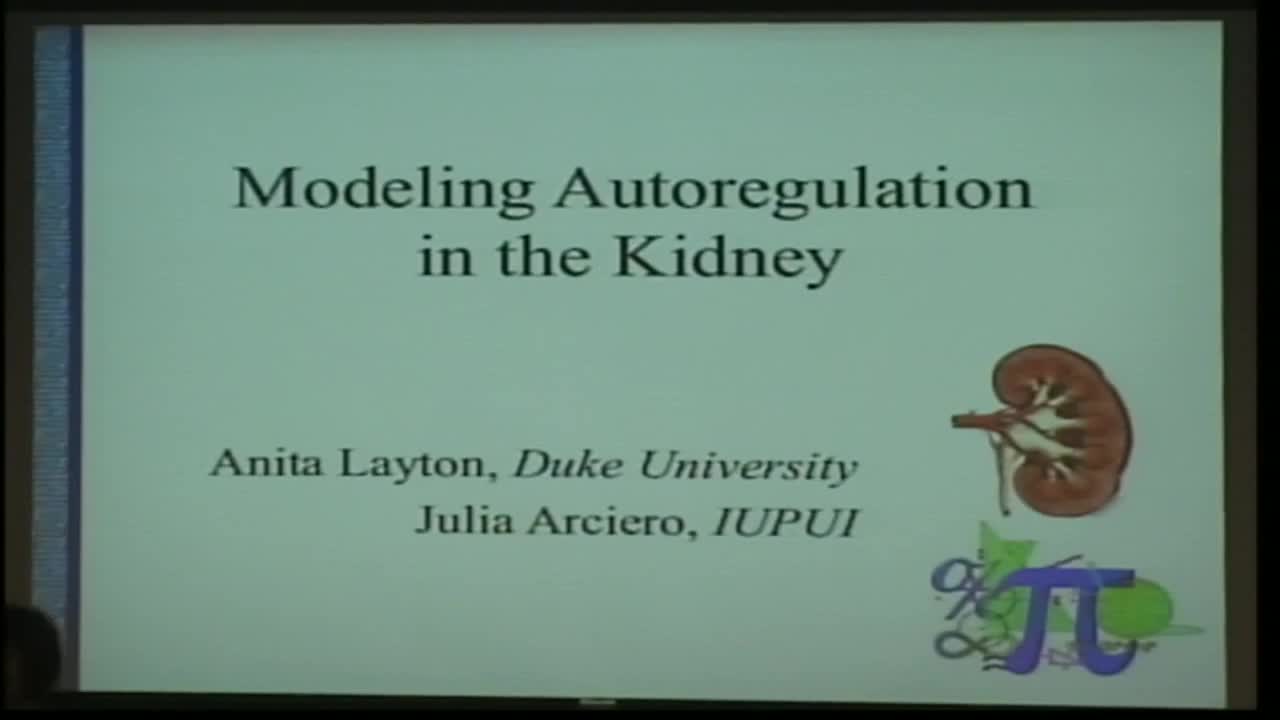Modeling Autoregulation in the Kidney
Presenters
September 9, 2013
Abstract
What is autoregulation?
Autoregulation is a biological process in which an internal adaptive mechanism works to adjust (or miti-gate) an animal’s response to stimuli. For example, the autoregulation process results in the maintenance of blood flow to tissues at a certain level despite variations in blood pressure or metabolism. Autoregulation is most prominent in the kidney, the heart, and the brain, inasmuch as appropriate perfusion of these organs is essential for life, and through autoregulation the body can divert blood (and thus, oxygen) where it is most needed.
Why study the kidney?
Autoregulation of renal blood flow and glomerular fil-tration rate in the kidney is critical, since about 25% Pressure of one’s cardiac output passes through the kidney. The kidney is responsible for excreting a small (but appro-
priate) fraction of the filtrate depending on the condi-tions of the body. Impaired renal autoregulation is a symptom of and a contributing factor to the progress of diseases such as hypertension and diabetes. The frequencies of these diseases have skyrocketed among the US and overseas population in recent decades. By gaining a better understanding of renal autoregulation, in physiological and pathophysiological conditions, we might have a better idea of how to control the progres-sion of hypertension and diabetes.
What are the autoregulation mechanisms in the kidney?
The two major autoregulation mechanisms in the kidney are the tubuloglomerular feedback (TGF) and myo-genic response. TGF attempts to balance glomerular filtration with tubular reabsorptive capacity, whereas the myogenic mechanism induces vasoconstriction when blood pressure is increased. These two mechanisms
share a common effector in the afferent arteriole, which is the vessel that delivers blood to the kidney’s filter (glomerulus).
What will this team do?
We will develop a model that represents the TGF and myogenic mechanisms. The model will include mass transport along a loop of Henle (PDE) and a circuit-based representation of the afferent arteriole (algebraic equations). There are a lot of interesting things we can do with the model:
Bifurcation analysis. TGF is a negative feedback system with a nonzero feedback delay. One can ask the question: when the system is given a transient perturbation, will it return to a steady state, or will it evolve into a sustained oscillation (i.e., limit-cycle oscillation)? How does the answer depend on model parameters (i.e., feedback gain and delay, myogenic response strength, etc.)? One can study this question by analyzing a linearized version of the model equations.
Numerical simulations. The full nonlinear model can be run, for different sets of parameters, to validate predictions of the linear model above.
Stochastic PDE with feedback. We can introduce stochasticity into some of the model parameters and see how the stability of the system is affected.
We can use the model to study pathophysiological mechanisms in diabetes, including salt-handling and glomerular hyperfiltration.
What do you need to know to be part of this project?
You should be interested in the physiology, but you do not need to be an expert on the kidney. You should know how to code in matlab.
